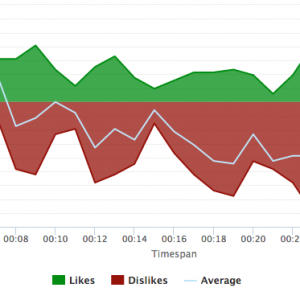“Strike while the iron is hot.”
Let’s say you’re making a pivotal spot for your company’s next huge advertising push. Your new creative concept involves a famous actor named her Jane Superstar. Getting Jane Superstar to work with you could mean million dollars in investment for your company. This is costly, thus making it highly risky from the business perspective. You need to have good data to backup this decision and justify production cost.
Let’s look at how you can minimize risks for your company, and become the office hero by testing your storyboards:
1. Identify your key hypothesis, and correlate them with your current business goals.
Let’s go back to the example. In this case, zoning in the question of the Jane Superstar being an excellent fit for the campaign, the hypothesis are:
“Jane Superstar would increase brand likability and likelihood to purchase.”
2. Question your assumptions.
The clever saying “when you assume, you make an ass of you and me” holds true. When you question your assumptions, you can design great surveys that give you tremendously useful data. For example:
- Do we need the famous actor? Can we replace the famous actor with someone less known and still achieve the same impact?
- How would the audience perceive this actor in relation to our brand? Specifically, what attributes would they associate with our brand by starring Jane Superstar?
- How would the new spot perform in Likelihood to Purchase compared to currently running spot?
3. Design survey questions that help you directly answer your assumptions.
Based on the 3 assumptions above, let’s design your survey. There are three components in this example — actor, brand perception, and likelihood to purchase. Some questions you could include:
The actor
- “Who is the actor in the ad you just saw?” [open ended]. See if your respondents can recognize this actor.
- “I relate to the character(s) in this ad” [likert, strongly agree — strongly disagree]. Determine if the audience relates to the actor.
The brand:
- “What is your opinion of the brand based on the ad you just saw?”[likert, like it a lot more — like it a lot less]
- “What attribute(s) would you associate with the brand in the ad you just saw?”[multiple options/checkboxes. The options here should contain some words that you would like your brand to be associated with. It should also contain antonyms of those words in case the ad did not achieve the effects you desired.]
Likelihood to Purchase:
- “After watching the ad, you are ____to purchase the product.” [likert, much more likely — much less likely].
4. Produce storyboards with voice-over (VO)
Now that you’re clear about what you need to test, it’s time to talk to your creative folks to produce storyboards with VO. In this example, you’d need three storyboards with VO: your new concept with Jane Superstar, your new concept with a less expensive substitute actor, and your current top performing spot. This way, you can gaze how much value Jane Superstar adds to your spot, and how your new concept would perform against your top performing spot.
5. Test your storyboards on Spot Trender and analyze the data:
Let’s call the spot with Jane Superstar “JS”, without Jane Superstar “NoJS”, and the current top performing spot “Current”.Hypothetically, you received the results below:
Actor:
- 63% correctly recognized actor in JS, 10% in NoJS, and 53% in current.
- 43% relate to actor in JS, 63% in NoJS, in 60% in current.
Brand:
- 45% like your brand more in JS, 48% in NoJS, and 47% in current.
- Top 3 attributes for brand
- JS: “premium”, “sophisticated”, “powerful”
- NoJS: “premium”, “exciting”, “sophisticated”
- Current: “premium”, “classy”, “sophisticated”
Likelihood to Purchase:
- 46% more likely to purchase in JS, 45% in no JS, and 47% in Current.
Let’s make sense of these golden nuggets of information:
- Actor: You can see that while many more people recognized Jane Superstar compared to other two spots, they relate significantly more to the substitute actor in NoJS.
- Brand: NoJS scored slightly better in likability compared to JS. All three spots are described as “premium” and “sophisticated”.
- Likelihood to Purchase: While Current scores highest, there is no significant difference between 3 spots.
6. Decision time!
Knowledge is power. Armed with the insights above, it’s your turn to be powerful. You know that while Jane Superstar has huge name recognition, her presence did not increase your brand’s likability nor likelihood to purchase. Now, you can make the decision to go with a less known actor, and save your company millions in production/endorsement costs. You just saved the day. You are the office hero.
Spot Trender is a world-class ad-testing service. We’ll work closely with you to test your storyboards, all the way to your post production spots. You’ll have access to our team of experts to help refine your storyboards, design surveys, and produce insightful reports for you to make impactful decisions based on your business objectives—so you can be the office hero. Feeling heroic? Contact us today.








